You might be wondering if that sparkly makeup kit your daughter is so excited about is healthy or harmful for her? In general, how do you know if your children’s makeup is unsafe or okay to use?
Read on. In this blog post we explore the differences between play makeup and real makeup, and explain the hidden dangers lurking in children’s makeup kits.
POV: My Own Experience With Children’s Makeup
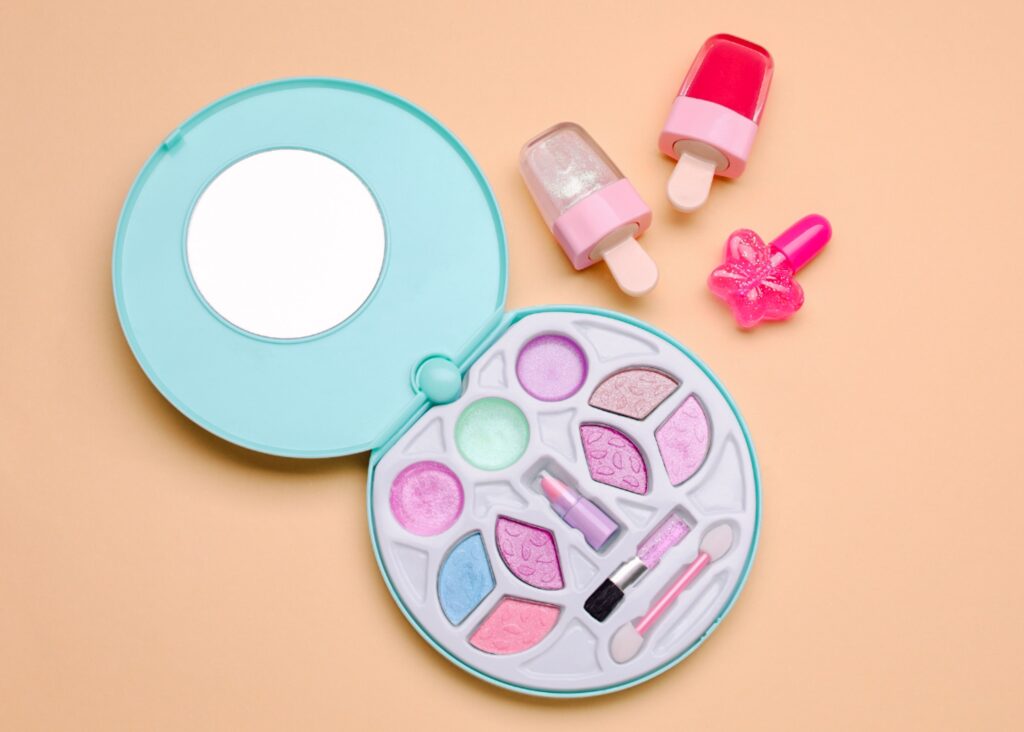
As a DIY beauty product maker, I am especially attentive and concerned what I put on my skin, hair, and body.
However, I had realized that while I do watch out what products my daughter uses for bath and shower time, I hadn’t nearly payed as much attention to her play makeup stash that she had gotten as party favors and gifts.
So I recently went through my daughter’s stash of colorful kids makeup, and realized that I didn’t like what I found!
Opinion: It’s Okay To Let Children Experiment With Makeup
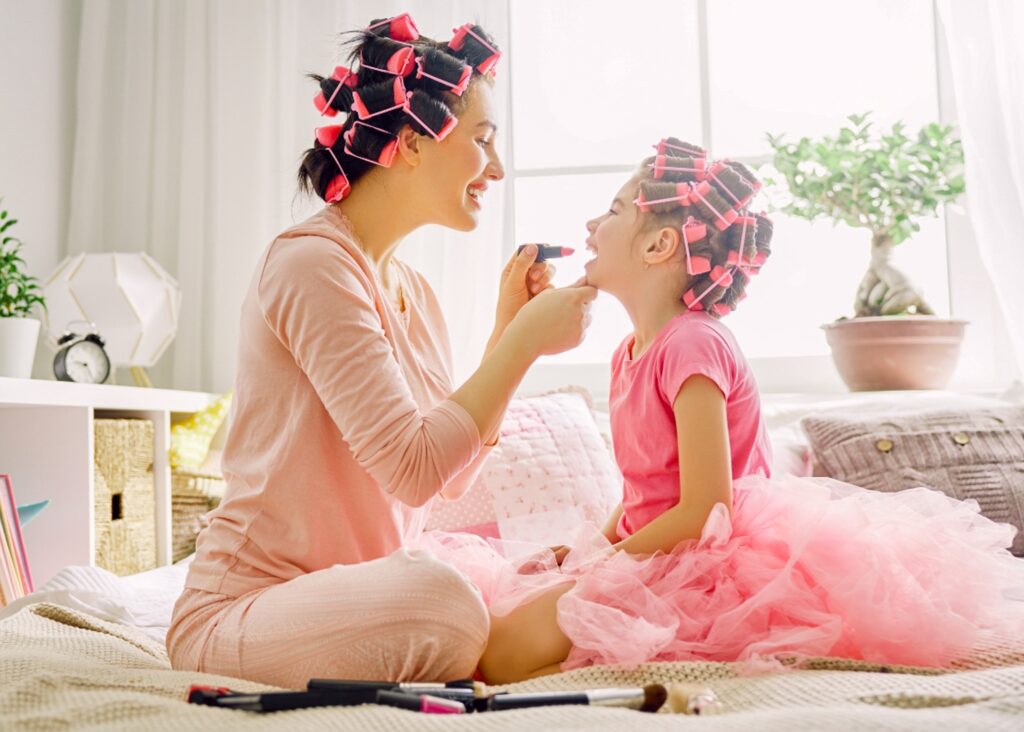
Many little girls treasure makeup kits, seeing them as a way to mimic their moms.
At the right time and with the right mindset, I see no harm in makeup kits for little girls.
I explained to my daughter that makeup, like jewelry, is an accessory. It shouldn’t alter how we feel about ourselves but can be a fun addition to how we dress. It’s a concept we’re still working on reinforcing.
Furthermore, makeup use should be limited to appropriate times and settings, avoiding school, sports camps, or proper family events.
Also, it’s important to teach children about appropriate makeup choices. For instance, certain colors (e.g., red lipstick) may not be suitable for their age.
Check out tips on How To Introduce Makeup To Your Daughter In A Positive And Modest Way.
Play Makeup vs. Real Makeup for Kids
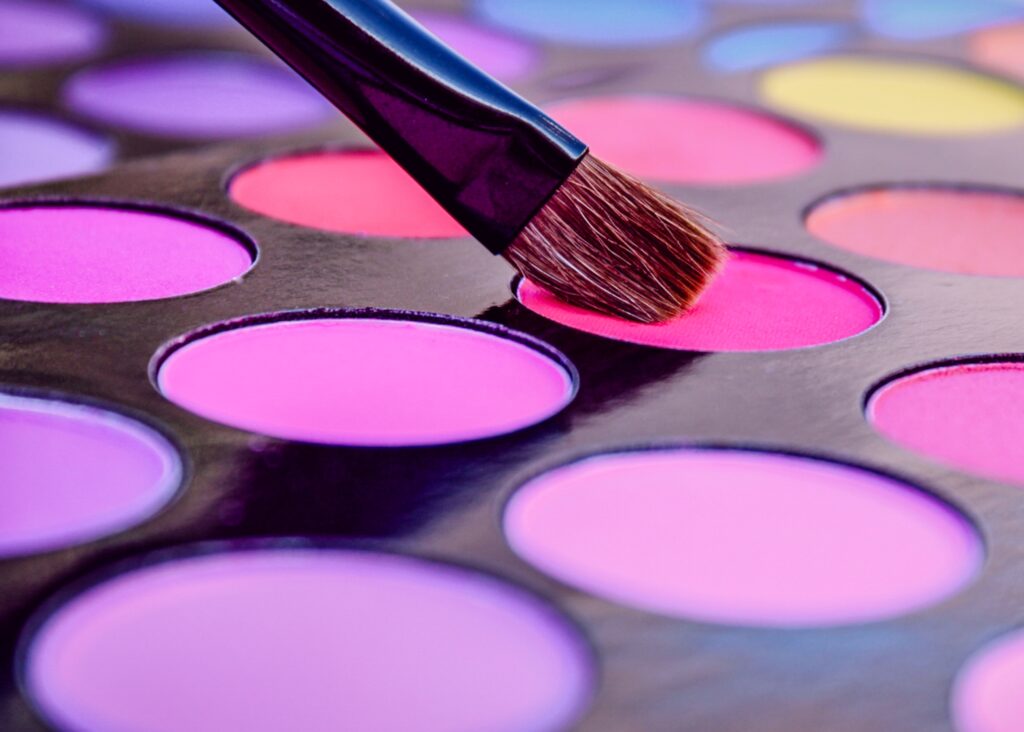
Play makeup differs significantly from the products adults use.
Often sold as toys, play makeup isn’t regulated like real cosmetics, which must list ingredients in descending order of concentration.
Furthermore, play makeup is frequently produced overseas, where oversight is even more limited.
This lack of regulation can hide potential hazards from substandard ingredients and poor manufacturing practices.
Concerns Over Unsafe Ingredients in Children’s Makeup

A primary concern is the quality of ingredients.
To maintain low costs, manufacturers might use cheap, low-grade substances.
These include various fillers and chemicals that haven’t been thoroughly tested for long-term use on children’s sensitive skin.
The thinner and more permeable skin of young children increases their risk of absorbing harmful substances.
Moreover, products like sparkly eyeshadow and lipstick are applied to the most sensitive areas of the face. This also increases the risk of ingestion or absorption.
Contamination Risks in Kids’ Makeup
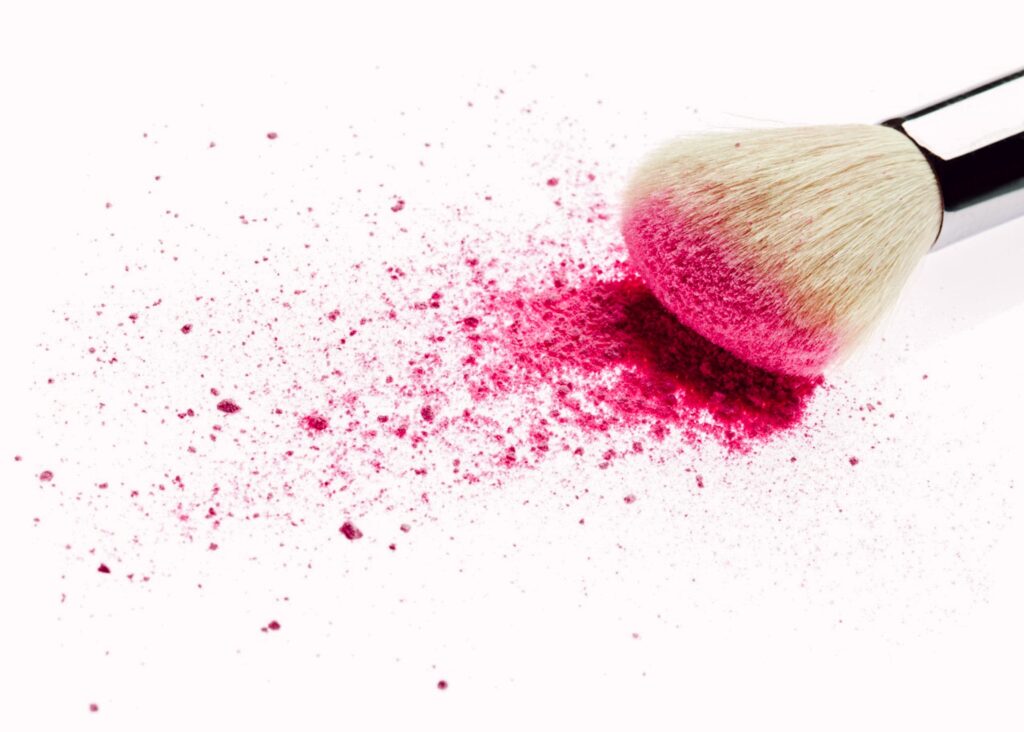
Less rigorous testing and lower standards in the manufacturing process can lead to contamination, which makes the makeup unsafe for children.
Instances of kids’ makeup being recalled due to asbestos, lead, and bacteria have been reported.
According to the International Journal of Environmental Research and Public Health, children’s makeup and body products “often have toxic chemicals, like lead, asbestos, PFAS, phthalates, and formaldehyde [and that these] contaminants, have been linked to cancer, neuro-developmental harm, and other serious and irreversible health effects.”
Dangers of Artificial Dyes and Heavy Metals
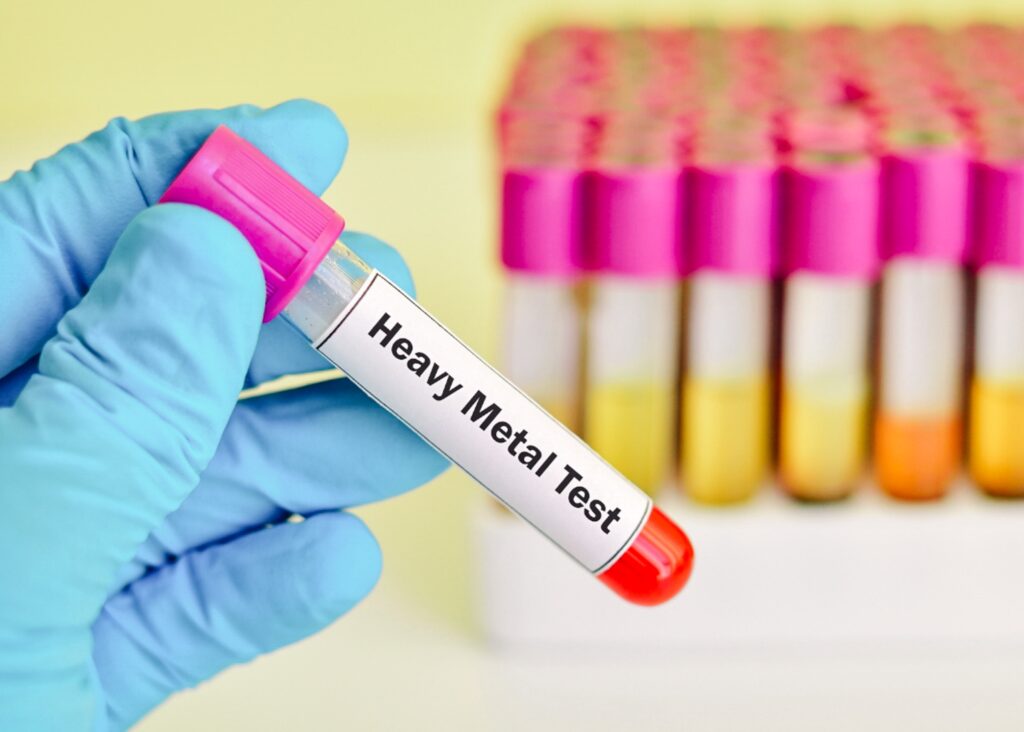
The vivid colors in children’s makeup usually come from synthetic dyes and heavy metals.
“The FDA surveyed heavy metals in cosmetics, including arsenic, cadmium, chromium, cobalt, lead, mercury, and nickel, and found that many cosmetics had these elements present in small quantities. However, they were testing for these minerals with adults in mind, not children,” says Mana Medical Associates, a pediatrician.
These substances can cause skin sensitivities and, over time, exposure to heavy metals like lead can affect a child’s development.
Ethical and Environmental Concerns

The production of children’s makeup can harm both the environment and the workers involved.
For instance, the mining of sparkly mica often involves unethical labor practices, including child labor.
According to a news report by ABC News, “10,000 children work in the mica sector […] children as young as 4 years old performing long hours of labor-intensive work in often dangerous conditions to collect [the] mineral” that is turned into glitter. […] Many of them eat only at night and suffer from grown-up afflictions: back pain due to the long hours hunched over, as well as headaches because of the heat and the lack of water or oxygen inside the mines.”
These practices, driven by the demand for inexpensive products, highlight significant ethical dilemmas and contribute to the depletion of natural resources.
While the sparkly makeup your child uses might not directly affect their health, it’s important to consider the health of another child who may have been involved in mining the sparkly minerals.
This highlights a critical ethical consideration when choosing where to buy your products.
Advice for Parents To Avoid Unsafe Makeup For Children
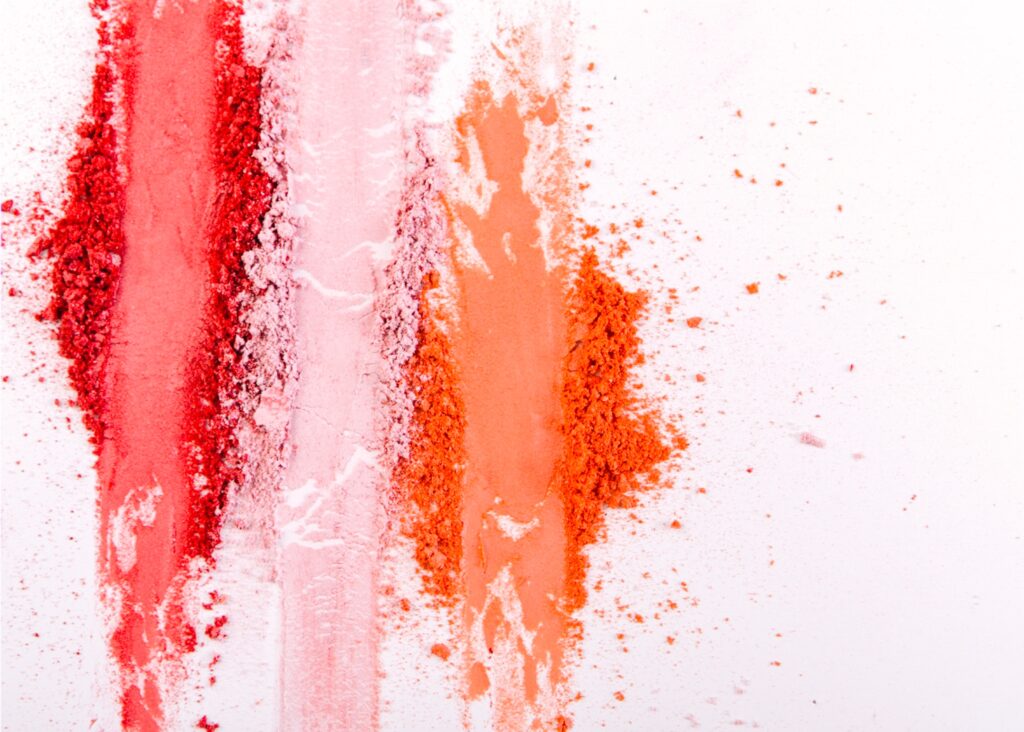
The best approach for parents to avoid unsafe children’s makeup is to be well-informed and make conscious choices.
To learn more about safe, ethical makeup options for children, including the best brands, natural and organic alternatives, and some engaging DIY projects, be sure to check out our follow-up blog post: “Safe, Natural, and Organic Kids’ Makeup Choices” and well as “Safe, Organic DIY Kids Makeup Projects“
CONTINUE YOUR JOURNEY THROUGH NATURAL SKINCARE
Interested in more information about kids and DIY cosmetics and skincare?
Check out these popular Lei ʻohu Cosmetics posts:
> Maui Flower-Themed Kids Birthday & Workshops
> Pumpkin Spice Beauty Workshop
> Ali’i Lavender Maui Beauty Workshop
If you love Hawaii and you enjoy wellness vacation tips, beauty secrets, and DIY recipes, then sign up for my newsletter where I explore different beauty rituals from Hawaii and around the world.
We look forward to welcoming you to paradise soon!

Is Children’s Makeup Unsafe?
Highlights:
Book Now
Experience the transformative power of Hawaii's natural botanical ingredients and harness the healing energy of the islands at our DIY cosmetics workshops, where you create your own personalized beauty products.
Reserve your spot today and embark on a fun, rejuvenating journey of self-care and holistic wellness.